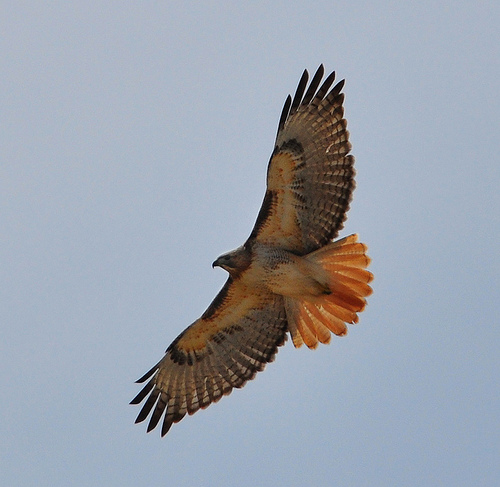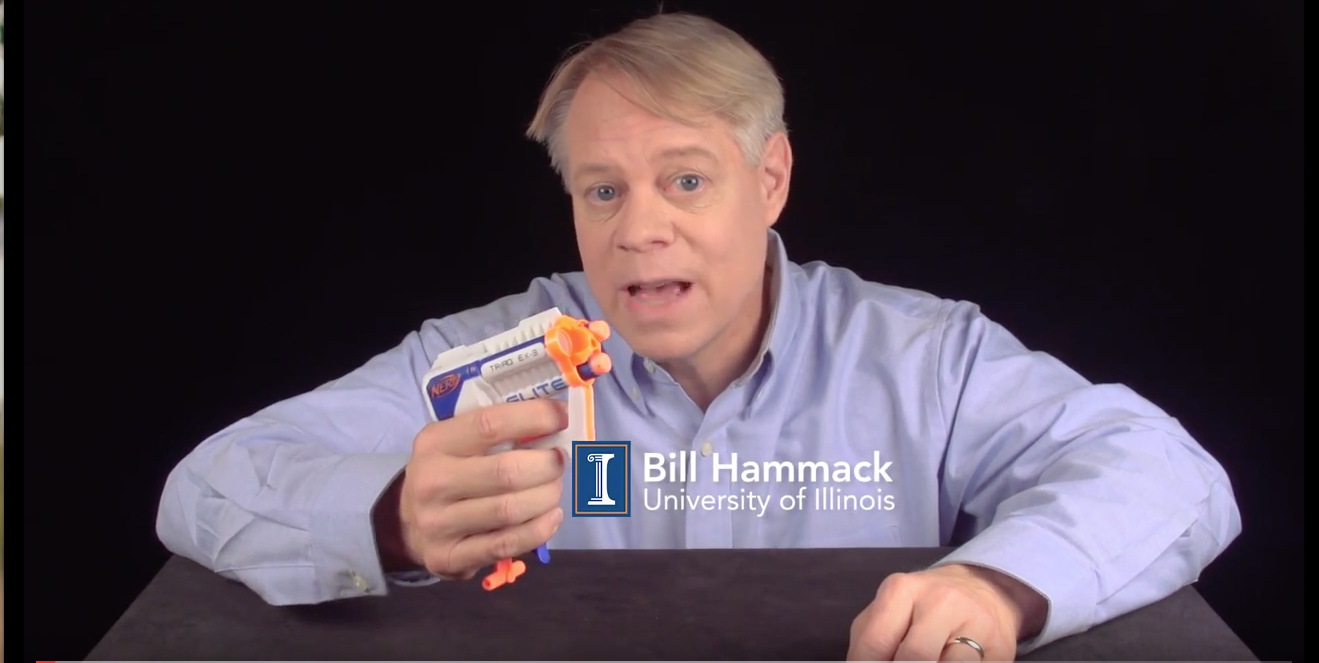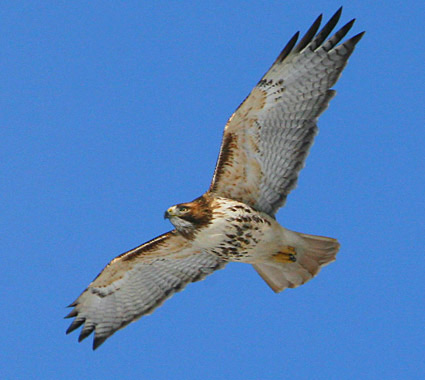The Cornel Lab of Ornithology has been monitoring a Red-Tailed Hawk nest perched above their athletic field. You can watch too from the live video stream below:

If you click through to the Livestream page you can even view clips of the hawk laying eggs!
About the Nest
A Red-tailed Hawk pair has been nesting on a light pole 80 feet above Cornell University’s athletic fields on Tower Road for at least the past four years. In 2012, we installed a camera to get a better look at these majestic birds as they raise their young amid the bustle of a busy campus. So far, we’ve seen the birds bringing prey such as voles, squirrels, and pigeons to the nest.
Big Red and Her Mate
The female, nicknamed “Big Red” in honor of her alma mater, is slightly larger, with a darker head, nape and throat, and is banded on her right leg. From banding records we know she was banded in nearby Brooktondale, New York, during her first autumn in 2003, making her nearly nine years old.The male, nicknamed “Ezra” after the co-founder of Cornell University, is banded on his left leg. He’s a bit smaller and has golden-tawny feathers on his face and head, and a paler neck than the female. He is at least seven years old and was first banded in 2006 as an adult bird on Judd Falls Road near the Cornell campus. [All About Birds]
See more hawk photos on Flickr.
About Red-Tailed Hawks
This is probably the most common hawk in North America. If you’ve got sharp eyes you’ll see several individuals on almost any long car ride, anywhere. Red-tailed Hawks soar above open fields, slowly turning circles on their broad, rounded wings. Other times you’ll see them atop telephone poles, eyes fixed on the ground to catch the movements of a vole or a rabbit, or simply waiting out cold weather before climbing a thermal updraft into the sky. [allaboutbirds.org]
Ornithology is a a division of Zoology that studies birds.
-Mike












Add comment